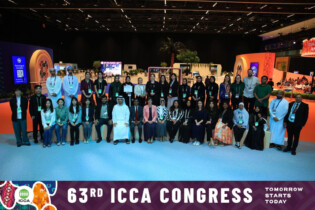McKinsey and Company finds that multiday remote digital events are a cost-effective tool for identifying new suppliers, reducing risk while increasing resilience.
Two years ago, tradeshow and exhibition floors were a hive of activity, bringing buyers and decision-makers flocking in their droves to their halls. For those in procurement, it was an opportunity to not only learn more about a product or service but also to connect with the people representing those products and services. The model was flawless, and these sorts of events quickly grew to become important economic drivers.
Then, 18 months ago, the world changed.
Suddenly, any in-person gathering was deemed a risk of becoming a so-called super-spreader event. While there have been several proofs of concept events to demonstrate the health and safety protocols that can be implemented to ensure live tradeshows can take place safely, current travel and lockdown restrictions are likely to impede how these events make a comeback for quite some time.
This poses a challenge for decision-makers in the procurement space who may have typically relied on these events to identify and source suppliers.
“An intense, multiday event conducted remotely can be a powerful tool for finding new suppliers, reducing risk and cost, and increasing resilience,” says McKinsey and Company in its findings on how events can be used for harnessing value in procurement.
What is the driver for CPOs?
In its research, McKinsey and Company says that chief procurement officers (CPOs) at industrial companies around the world face a strategic imperative to cut costs but that several challenges reduce savings potential. Some of these challenges include fragmentation and reduced transparency but in the wake of the Covid-19 pandemic, travel restrictions “are further limiting the ability of procurement departments to optimise spend.”
“Constraints such as stringent qualification requirements, combined with limited structuring and codification of current approaches, mean companies often rely on traditional single-source suppliers close to their production facilities. In addition, a long tail of simple, commoditised, and highly diverse spend categories – such as fasteners, small machined parts, and electronic components – are often overlooked as a source of efficiency initiatives, despite offering significant savings potential.”
A solution, according to McKinsey and Company, is to consider ‘digital supplier days’ (DSDs) as an opportunity for procurement.
“DSDs can address many of these challenges, compressing weeks – or even months – of research and negotiations into a single, multiday event (exhibit). Accelerated, analytics-based, and negotiated remotely, DSDs are designed to tackle fragmented categories and long-tail spend. By creating a strong sense of healthy competition among suppliers, with real-time visibility of negotiation outcomes, DSDs can help industrial players build stronger, more flexible supply chains, reducing costs by more than 20% and lead times by 15%, all with a fast negotiation process and almost zero logistics required for assembling suppliers.”








